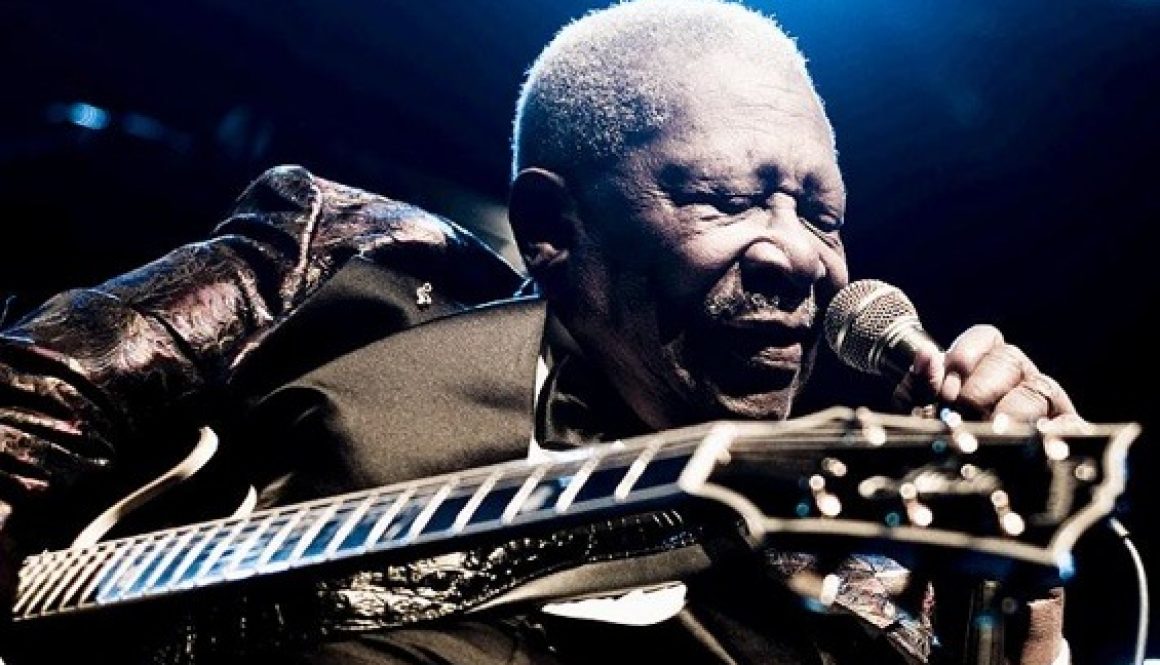Standard Twelve Bar Blues (and the “Quick Change” Blues)

The twelve bar blues form is one of the most used song structures in music. You will find it occurring in all sorts of music genres from blues to rock to country to folk to pop to jazz and more. Not only that, but many songs use slight variations of the twelve bar blues format as well. So getting familiar with the basic structure of the twelve bar blues will help you immensely as both a guitarist and a musician, particularly if you want to play and jam with other musicians.
First off, the term “twelve bar” indicates how long each verse of the song is going to be. A bar is another term for “measure” and a measure is how we go about counting the particular pulse of a song. If you’re unfamiliar with these terms, do yourself a favor and read any of our beginners’ lessons on reading rhythms, like Timing is Everything or Standard Notation . That’s what they are there for!
You’ll also want to brush up on a little bit of chord theory. Fortunately, all you really need for this is to take a look at the “microlesson” on Diatonic Chords .
Getting a handle on the basic twelve bar blues is truly easy if you can manage to keep almost any blues song in your head. Typically any given verse of a blues song consists of three lines, or phrases, like this:
I woke up this morning with the blues real bad
Yeah I woke up this morning with the blues real bad
Can’t even think up a rhyme for “bad,” now ain’t that sad?
Conveniently, twelve (the total number of measures) can be divided by three (the total number of lines) to give us four. Thinking of the twelve bar blues in terms of three separate phrases, each four measures long, will get you going pretty quickly. What makes it even better is that, and again this is fairly standard for most (notice I didn’t write “all“) blues songs, the chord progression tends to be as follows:
The first four-measure phrase is played with just the root (also called the “I”) chord. You switch to the IV chord for the first two measure of the second phrase and then go back to the root chord for the last two measures of that phrase.
The third phrase is a little trickier. The first measure is the “V” chord, the next measure is the “IV” and the next is the “I” again.
What happens in the last measure depends on which overall point in the song you happen to be at. If you’re going back to do another verse (or an instrumental break), then you would have a turnaround in the last measure. A turnaround is a quick set of chord changes that usually ends up on the “V” chord, so that you follow that “V” chord with the “I” chord that starts the next verse. If you’re ending the song, then you might sit on the “I” chord during both the last two measures or there may be a little bit of a turnaround followed by a final measure or two of the “I” chord.
Again, this is the very basic twelve bar blues format. There can be all sorts of minor variations. For example, 7th chords can easily substitute for any of the I, IV or V chords. Suppose you’re playing basic twelve bar blues in the key of E. Your “standard” set of changes would look like this:
Adding 7th chords to the mix can make things a bit more interesting because these chords essentially add blue notes to the basic major chord progression. Blue notes are essential to the sound of the blues and you can read about them, and also discover why the notes of the minor pentatonic scale are so important when playing blues in a major key, in Part 3 of our Turning Scales into Solos lessons. Tossing in a few 7th chords, you might spice up your basic chord progression like this:
Keep in mind that you could use 7th chords anywhere in this progression. You could play nothing but 7th chords if you so choose. If you want to write out this last example in terms of generic Roman numerals, and remembering that we are in the key of E, so E is the “I” chord, E7 would be “I7,” meaning that we have gone with the 7th chord of the “I” chord. A7 and B7 would be “IV7″ and “V7″ respectively.
Probably the single variation of the twelve bar blues that you will run into more than any others is what’s called the “quick change” blues. It’s almost the same as the regular twelve bar blues format, except that you go to the “IV” chord (or “IV7″ if you prefer) for the second measure of the first phrase and then right back to the “I” chord in the third measure, like this:
You can hear this variation in songs like Before You Accuse Me or Sweet Home Chicago. Notice in this example I took the liberty of throwing in 7th chords in order to make things a little more blues-y.
Having a feel for the structure of twelve bar blues will help you play a lot of songs. Tunes like Folsom Prison Blues, Roll Over Beethoven, Jump Jive and Wail and hundreds of others are simply either twelve bar blues in structure or a very slight variation – they might use an additional “V” chord in place of the “IV” chord in the second measure of the third phrase, for instance. You can see why learning just three chords gives you the chance to play thousands of songs.
Peace




